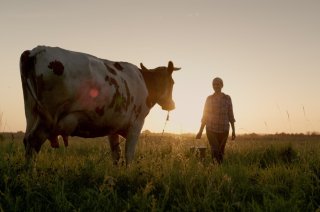
category_news
Climate goals 2030 can be met by recoupling livestock and feed production
Recoupling livestock and feed production in the Netherlands will reduce ammonia emissions (nearly half) and greenhouse gas emissions (more than a quarter), nearly meeting the national climate goals for 2030. That is the main conclusion of research of Wageningen University & Research (WUR) published in the scientific journal Science of The Total Environment. In this study, the amount of feed that can be produced in a region determines the number of livestock.
In the Netherlands, much feed for livestock is imported: livestock and feed production are decoupled. Feed is grown in one region and fed to livestock in another, which leads to an accumulation of nutrients in the Netherlands. ‘Recoupling livestock and feed production creates a natural ceiling for livestock numbers’, says researcher Ben van Selm. ‘The amount of feed produced in a region then determines the number of pigs, cattle and poultry that can be produced.’
Decrease livestock numbers
When recoupling livestock and feed, the scientists found that livestock numbers would decrease. Especially the poultry and pig sector, would both decrease by more than half. The Netherlands has a large area of permanent grassland which can only be utilised by cattle and sheep, while the amount of arable land available to produce feed for pigs and poultry is limited.
The livestock density in the Netherlands is currently the highest in Europe. This has resulted in a large surplus of nutrients in animal manure causing groundwater pollution, greenhouse gas emissions, and excessive ammonia emissions. This contributes to high the nitrogen deposition rates that damage our nature areas.
Circular food system
The proposed animal production would still meet our current consumption of animal products in the Netherlands. If we were to take it further and move to a circular food system in the Netherlands, where feed production on cropland would be limited, meat consumption would need to half.
‘Recoupling livestock and feed production at a local level is a logical step to restore nutrient recycling in food systems’, says researcher Imke de Boer. ‘It creates a natural ceiling for livestock numbers based on the feed production capacity of a region. Our food system explorations may be used in the policy process to reform the food system. We show that recoupling livestock and feed production is a promising next step to enhance circularity while decreasing agricultures environmental impact’.
The researchers of WUR have built a food system model called FOODSOM which they used to calculate the environmental consequences of four scenarios for this study. Economic, political, financial and societal implications fall beyond the scope of this research.